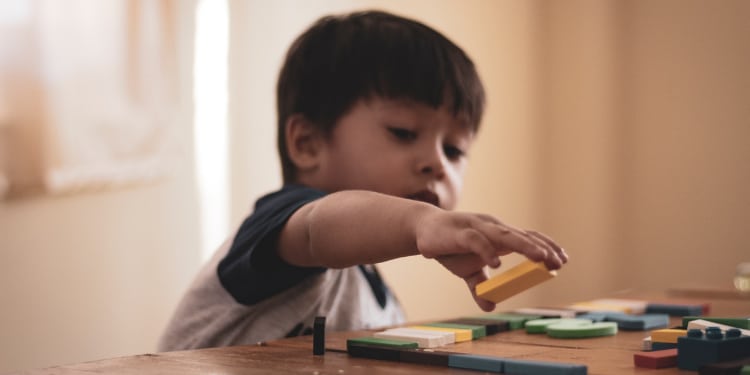











Today, the term milieu therapy refers to a protected treatment program environment, often in a short or long-term residential setting. Essentially, it’s a form of psychotherapy with a focus on using the setting and staff as part of the healing process. This therapy may be used as either one specific approach or as part of a broader treatment program. Milieu therapy is used to treat various problems including immediate mental crises, addiction, or eating disorders, in addition to other mental conditions.

The concept of milieu therapy, or the therapeutic milieu, was first devised in Germany in the early 1900s to describe a new treatment for psychiatric patients. People with intellectual challenges or mental disabilities, such as unmanaged schizophrenia, were treated with milieu therapy as in-patients in state-funded hospitals. The adoption of this therapy was a turning point in psychiatric treatment since such facilities had up to then been mostly focused on alleviating psychiatric symptoms and providing immediate safety.
Whereas with milieu therapy, the focus switched to the importance of the individual’s setting or environment in addition to the medical or psychiatric treatment. That is, the emphasis was on patients having healthy and functional interactions with staff, typically nurses at the time so that they would learn how to deal with stressful situations in their environment.
The number of state-run facilities has decreased in recent decades, following improved psychiatric medications and a change in attitude towards disabilities and mental health. However, the idea of the therapeutic milieu has remained and expanded, although its use varies based on individual programs and perspectives on the theory.[1]
In inpatient milieu therapy, daily life activities are part of the therapy. Individuals learn how to effectively complete hygiene tasks, attend work regularly, and participate in social and recreational events. Ideally, the participant has a significant influence on the setting, just as they would in an outside environment. An important element for newcomers is that of positive peer pressure, or role modeling from staff and more experienced participants. That is, others in the program may role model ideal behaviors, such as safe decisions and healthy self-care.
In the case of a residential setting, daily tasks may include a work program, individual and/or group therapy, 12-step group meetings, educational activities, and recreational events. The daily interactions with peers, staff, and mental health professionals help the individual practice social and coping skills. Ideally, as they develop these skills, they learn how to be safe and productive once they leave.
Patients may also participate in individual therapy within the broader program. This may look similar to outpatient therapy, with one or more meetings per week to address specific goals and symptoms. Patients may also attend community groups focused on specific issues such as anger management, problem-solving, and managing addiction, including 12-step groups such as Alcoholics Anonymous.
Finally, milieu therapy has been seen to be successful within prison settings, and group homes sometimes use this therapy for those in transition or for those who due to their mental illness or intellectual disability find it hard to live on their own.[2]
Often, a treatment team provides the activities and groups and creates the initial structure. Professionals on the team may include medical doctors as well as psychiatrists, nurses, social workers, psychologists, addiction counselors, occupational therapists, and recreational staff. The patient is also considered to be part of that team, and depending on the situation, family members may be invited to provide input.
Support staff provide daily companionship, oversee safety issues, and assist patients with special needs and challenges. They may also provide immediate coaching and support during emotional crises. This interaction with staff and peers also provides an opportunity to learn, cope with social challenges, and practice problem-solving.
Ultimately, other participants are part of the therapy as well. Positive peer pressure and role modeling help others to consider the choices and benefits of certain behaviors.
While many note the benefits of milieu therapy, some express concerns. For example, some professionals fear that it may be seen as too casual an approach, seeming as if there’s no treatment happening. Some professionals also believe the term milieu therapy is too ambiguous and no longer defines a specific type of programming.[3]
Additionally, many mental health and related treatment centers are understaffed and offer low pay, especially for support staff. This may create a situation where staff experience high stress and may not be equipped to provide the emotional support and coaching meant for a therapeutic milieu setting.
Others express concern that it’s difficult to transition from a milieu setting. Even when there’s support staff within a community, they’re typically not available full-time. This may make it difficult to adjust to the outside world.
Since milieu therapy is used in many different environments, the type and lengths of treatment can vary significantly. Here’s a look at three common settings where this approach is often used.
Crisis services may be needed in very short-term situations, such as when an individual has attempted suicide or feels a strong urge to do so. This is typically provided in psychiatric wards of local hospitals. These emergency situations tend to partially resolve within days or weeks, and ongoing treatment can often be provided on an outpatient basis. In this case, even the short-term relationships with staff and peers can be influential, and milieu therapy is utilized.[4]
Moderate-length programs may include treatment programs for alcoholism, drug addiction, sexual addiction, or eating disorders. These are sometimes delivered in outpatient or community settings. In that case, regular interaction with a peer group can serve as the therapeutic milieu.
Long-term settings (months to years) may service those in danger of harming themselves or others, to the point their safety can’t be managed in an outside setting. Over time, the environmental approach may allow them to deal with triggers and symptoms more safely.
In residential milieu therapy, the daily structure is often provided, especially for newcomers. This may be the case even in a setting that only generally follows milieu principles. Ideally, individuals involved have some autonomy within the program, so they can practice making their own decisions and dealing with the benefits and consequences of doing so.
If safety issues are involved, such as self-harm or threats towards others, individuals may be physically locked inside a residential psychiatric building, even in a milieu setting. This is typically the case with hospital or state psychiatric wards. However, when it comes to addiction treatment centers, individuals are typically able to check themselves out at any point, although they may face life consequences for doing so.
As noted, full-time residential or psychiatric programs are not the only places that offer milieu therapy. For example, group homes may provide a natural setting for milieu treatment. In this case, individuals participate in a traditional, homelike setting, which provides both safety and individual freedoms. Unlike in most hospital settings, residents may come and go to some extent.
Addiction and other treatment centers also may offer what’s called a day program or an intensive outpatient program. This often involves the same activities provided in the residential setting. However, the individual will sleep at home, while participating during the day or evening, depending on their work or parenting schedule. This allows some people access to milieu therapy who wouldn’t otherwise be able to participate.
In general, an ideal milieu therapy program will provide supportive, centered, and available staff. When possible, the setting mimics a natural environment, while providing daily protection and support. Through practicing in a stable environment, individuals can prepare to use effective life skills in their natural outside settings.
References